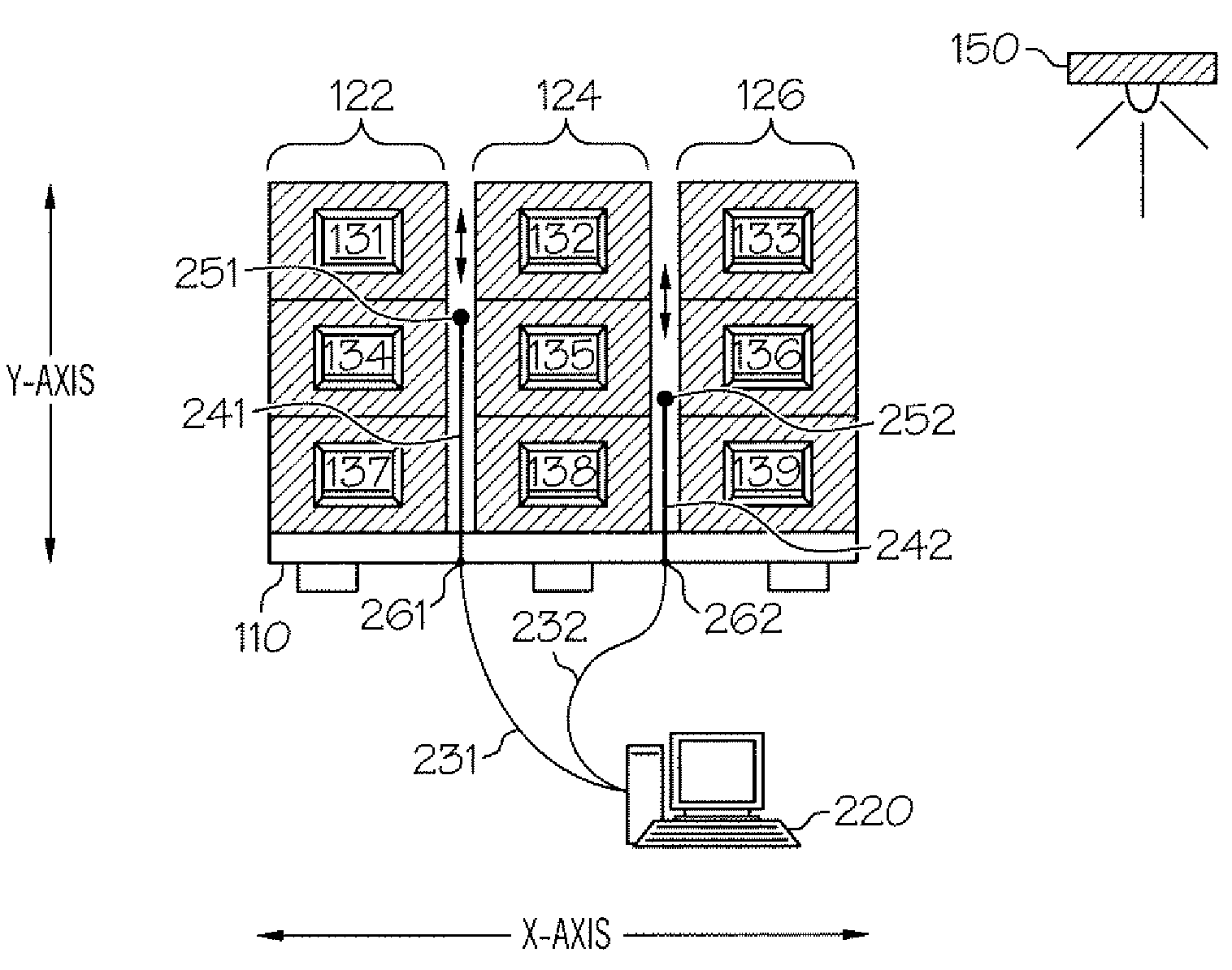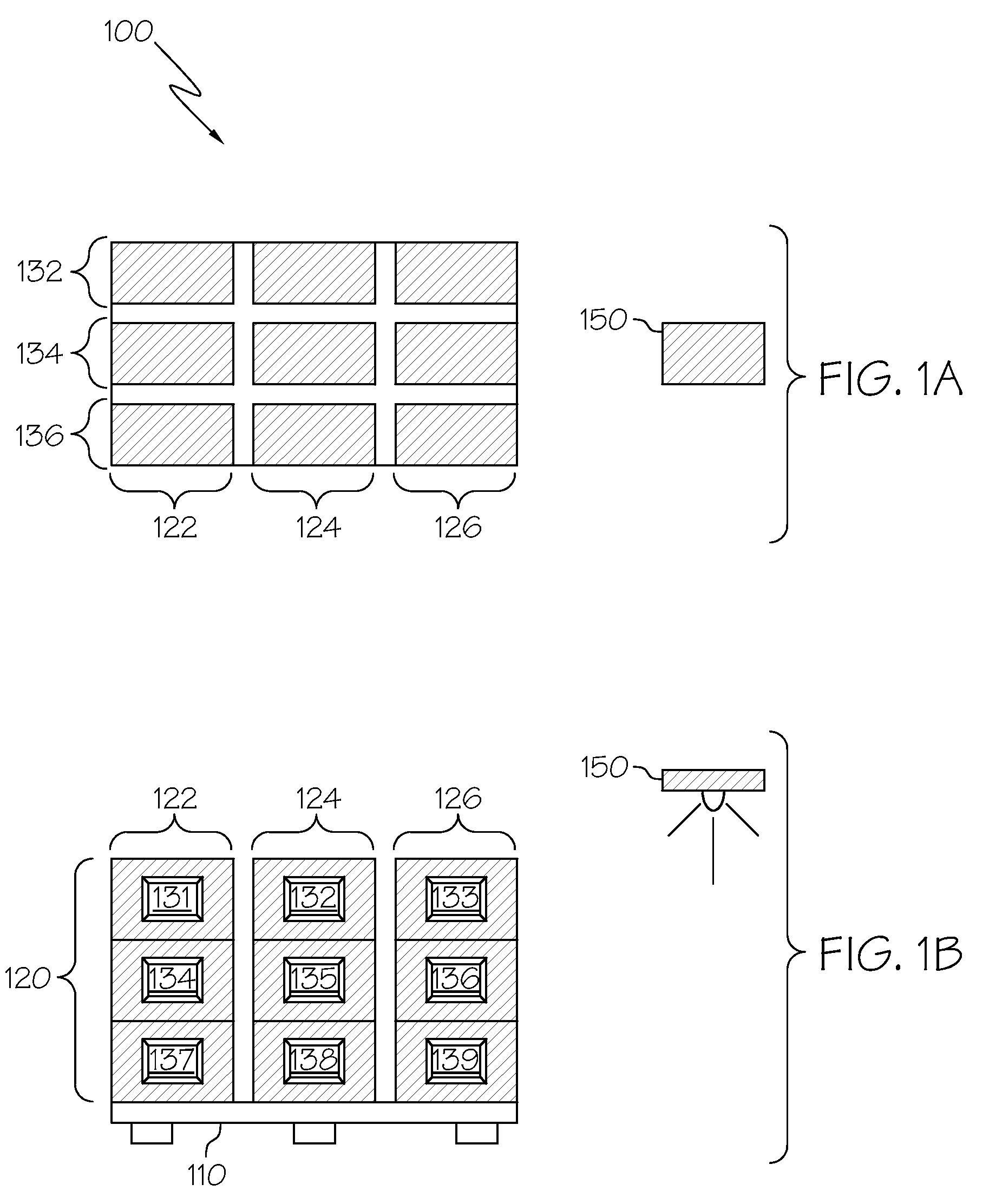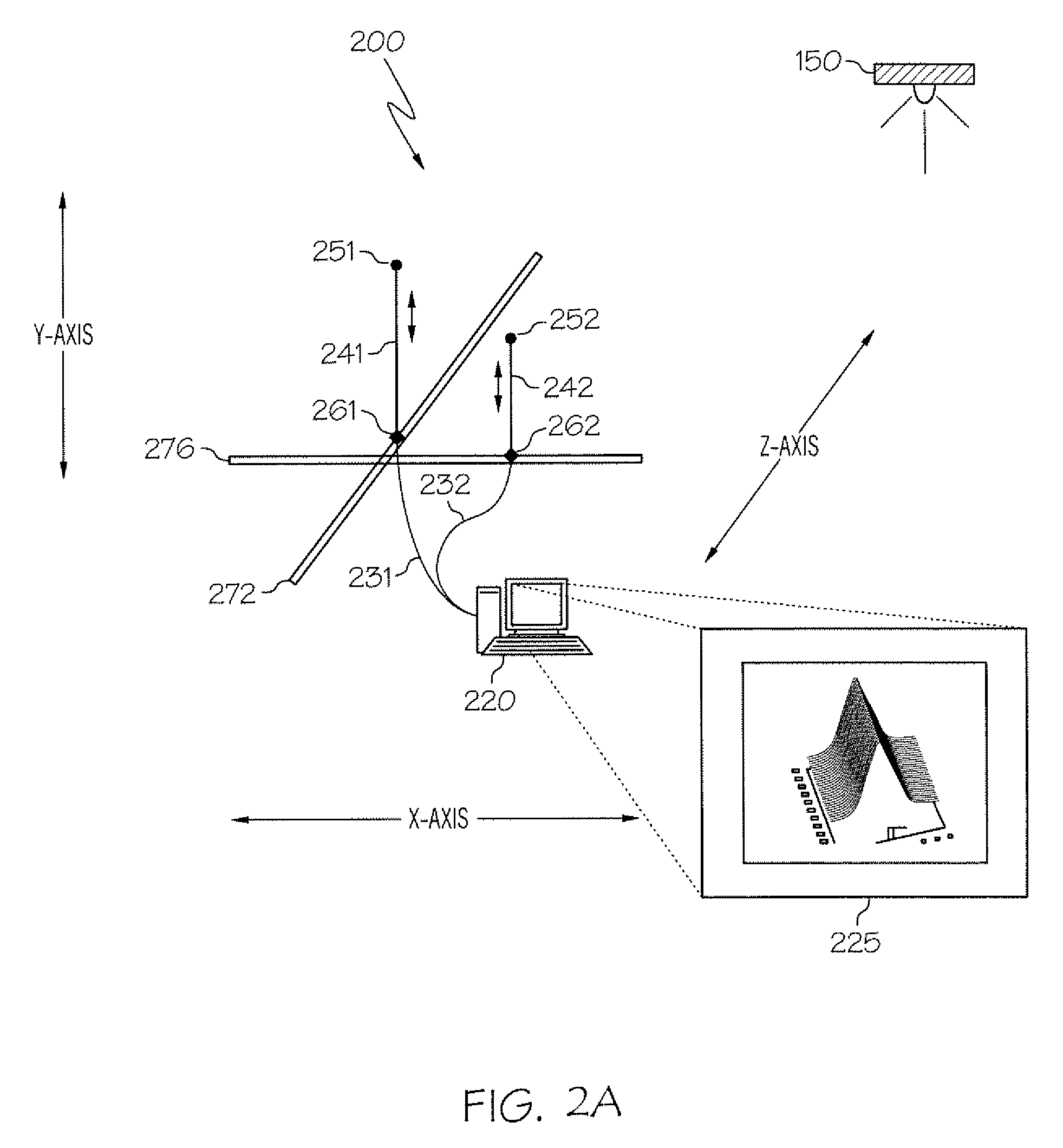System and method to automate placement of RFID repeaters
a repeater and automatic technology, applied in the field of electrical communication, can solve the problems of dead spots, rfid technology failed as tracking and inventory method, and passive rfid technology for inventory tracking
- Summary
- Abstract
- Description
- Claims
- Application Information
AI Technical Summary
Problems solved by technology
Method used
Image
Examples
Embodiment Construction
[0015]FIG. 1A and FIG. 1B show product pallet 100 representing a densely packed pallet of goods with RFID tags. Product pallet 100 comprises pallet 110 and a plurality of packages 120 in a generally cubical arrangement on the pallet. From the front view (FIG. 1B), plurality of packages 120 are shown stacked vertically (y axis) in first package column 122, second package column 124, and third package column 126. From the top view (FIG. 1A), it is also shown that the first, second and third package columns are also three packages deep (z axis) as well as three packages high (y axis). Accordingly, the plurality of packages can also be described as stacked in fourth package column 132, fifth package column 134, and sixth package column 136 that are each three packages wide (x axis) as well as three packages high (y axis). RFID transceiver 150 locates at a position within transmission range of product pallet 100.
[0016]FIG. 2 shows automatic RFID tuner 200 in simplified form with first RF...
PUM
 Login to View More
Login to View More Abstract
Description
Claims
Application Information
 Login to View More
Login to View More - R&D
- Intellectual Property
- Life Sciences
- Materials
- Tech Scout
- Unparalleled Data Quality
- Higher Quality Content
- 60% Fewer Hallucinations
Browse by: Latest US Patents, China's latest patents, Technical Efficacy Thesaurus, Application Domain, Technology Topic, Popular Technical Reports.
© 2025 PatSnap. All rights reserved.Legal|Privacy policy|Modern Slavery Act Transparency Statement|Sitemap|About US| Contact US: help@patsnap.com



